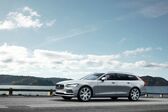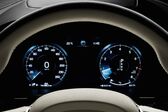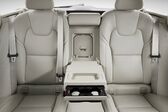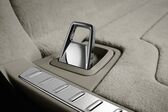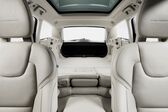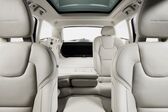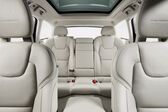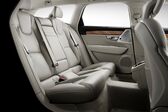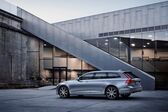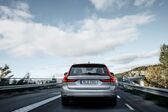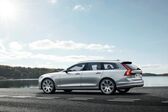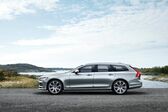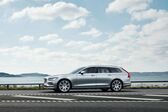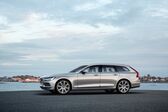Car Specs Volvo V90 V90 Combi (2016) 2.0 T4 (190 Hp) Automatic
Volvo V90 Combi (2016) 2.0 T4 (190 Hp) Automatic Specs
Volvo V90 Combi (2016) 2.0 T4 (190 Hp) Automatic has been in production since 2018 - 2020. Cars comes in Station wagon (estate) body types and can be suited with Petrol (Gasoline) engine types with a volume of 2L liters, engines produces a power of 190 Hp. Fuel consumption of Volvo V90 Combi (2016) 2.0 T4 (190 Hp) Automatic is 6.9 l/100 km. The overall dimensions of the car are 4936x1879x1475 mm, and the weight is from 1860 kg.
General data Generation V90 Combi (2016) Modification 2.0 T4 (190 Hp) Automatic Start of production 2018 year End of production 2020 year Powertrain Architecture Internal Combustion engine Body type Station wagon (estate) Seats 5 Doors 5 Fuel Type Petrol (Gasoline) Model B4204T31 Fuel consumption (economy), emissions Fuel consumption - urban 8.9-9.1 l/100 km Fuel consumption - extra urban 5.6 l/100 km Fuel consumption - combined 6.9 l/100 km CO2 emissions 158-160 g/km Emission standard Euro 6d-Temp Performance specs Acceleration 0 - 100 km/h (0 - 62 mph) 8.9 sec Maximum speed 210 km/h 100 km/h - 0 35 m Weight-to-power ratio 9.8 kg/Hp, 102.2 Hp/tonne Engine technical data Power 190 Hp @ 5000 rpm. Power per litre 96.5 Hp/l Torque 300 Nm @ 1620-4020 rpm. Maximum engine speed 6000 rpm. Engine location Front, Transverse Engine displacement 1969 cm3 Number of cylinders 4 Position of cylinders Inline Cylinder Bore 82 mm Piston Stroke 93.2 mm Compression ratio 10.8 Number of valves per cylinder 4 Fuel System Direct injection Engine aspiration Turbocharger Valvetrain DOHC Engine oil capacity 5.6 l Power Electric Steering Suspension and brakes specs Drivetrain Architecture The Internal combustion engine (ICE) drives the front wheels of the vehicle. Drive wheel Front wheel drive Number of Gears (automatic transmission) 8 Front suspension Double wishbone, Transverse stabilizer Rear suspension Transverse stabilizer, Torsion Front brakes Disc Rear brakes Disc Assisting systems ABS (Anti-lock braking system) Steering type Steering rack and pinion Dimensions Length 4936 mm Width 1879 mm Width 1895 mm Width 2019 mm Height 1475 mm Wheelbase 2941 mm Front track 1617-1928 mm Rear (Back) track 1618-1629 mm Ride height 153 mm Drag coefficient (Cd) 0.30-0.33 Minimum turning circle (turning diameter) 12.2 m Wading depth 250 mm Weights, volume and space Kerb Weight 1860 kg Trunk (boot) space - minimum 560 l Trunk (boot) space - maximum 1526 l Fuel tank capacity 55 l Max. roof load 100 kg Permitted trailer load with brakes (12%) 1800 kg Permitted trailer load without brakes 750 kg
 Volvo V90 Combi (2016) 2.0 T4 (190 Hp) Automatic has been in production since 2018 - 2020. Cars comes in Station wagon (estate) body types and can be suited with Petrol (Gasoline) engine types with a volume of 2L liters, engines produces a power of 190 Hp. Fuel consumption of Volvo V90 Combi (2016) 2.0 T4 (190 Hp) Automatic is 6.9 l/100 km. The overall dimensions of the car are 4936x1879x1475 mm, and the weight is from 1860 kg.
Volvo V90 Combi (2016) 2.0 T4 (190 Hp) Automatic has been in production since 2018 - 2020. Cars comes in Station wagon (estate) body types and can be suited with Petrol (Gasoline) engine types with a volume of 2L liters, engines produces a power of 190 Hp. Fuel consumption of Volvo V90 Combi (2016) 2.0 T4 (190 Hp) Automatic is 6.9 l/100 km. The overall dimensions of the car are 4936x1879x1475 mm, and the weight is from 1860 kg.
